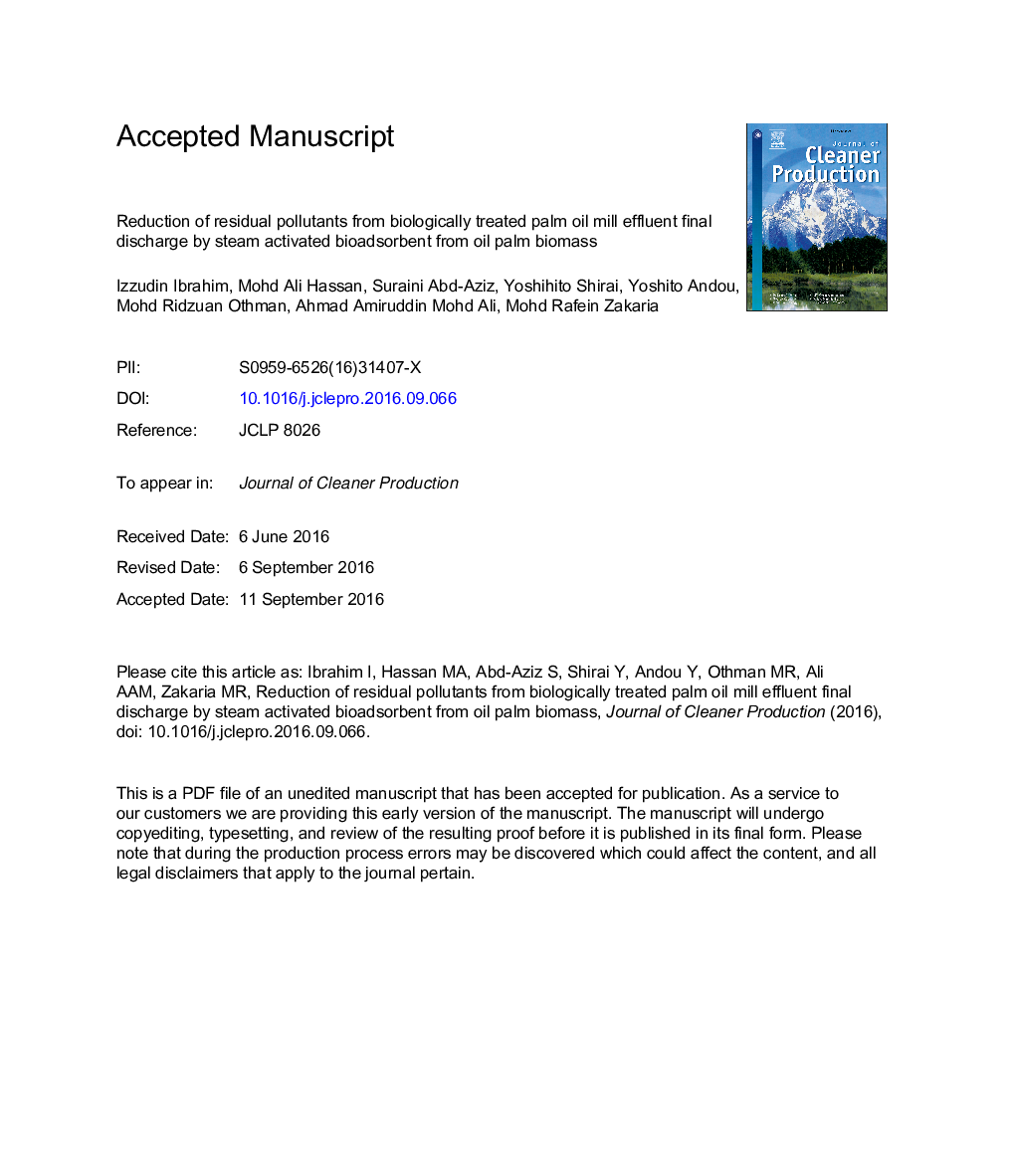| Article ID | Journal | Published Year | Pages | File Type |
|---|---|---|---|---|
| 5481670 | Journal of Cleaner Production | 2017 | 25 Pages |
Abstract
Treatment of wastewater using bioadsorbent has gained interest as one of the tertiary treatment methods. Bioadsorbents from peat, coconut shell, fruit stones and oil palm biomass have been produced but the bioadsorbent ability in removing pollutants from biologically treated palm oil mill effluent final discharge is scarcely reported. This research attempts to treat biologically treated palm oil mill effluent final discharge using steam activated oil palm mesocarp fiber bioadsorbent without the use of chemicals as activating agents. Oil palm mesocarp fiber was carbonised at 600 °C for 30 min and later activated using steam at same temperature for another 30 min. The Brunauer-Emmett-Teller (BET) surface area of the bioadsorbent was found to be 494 m2/g. Bioadsorbent produced was then used to treat biologically treated palm oil mill final discharge by mixing both bioadsorbent and the wastewater into a conical flask and shaken at 150 rpm for 24 h. At 10 g/L dosage, the bioadsorbent reduced the chemical oxygen demand and suspended solid of biologically treated palm oil mill effluent final discharge from 395 mg/L and 117 mg/L down to 303 mg/L and 14 mg/L, respectively. Consecutive treatments at 10 g/L dosage resulted in higher removal of the chemical oxygen demand and suspended solids up to 122 mg/L and 7 mg/L, respectively, which meets the river water quality, making the final wastewater suitable as recycled water for the zero-emission system in the palm oil mill.
Keywords
Related Topics
Physical Sciences and Engineering
Energy
Renewable Energy, Sustainability and the Environment
Authors
Izzudin Ibrahim, Mohd Ali Hassan, Suraini Abd-Aziz, Yoshihito Shirai, Yoshito Andou, Mohd Ridzuan Othman, Ahmad Amiruddin Mohd Ali, Mohd Rafein Zakaria,
